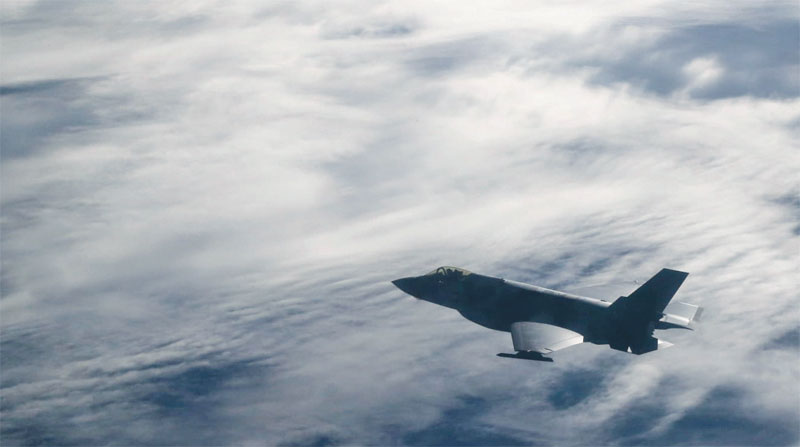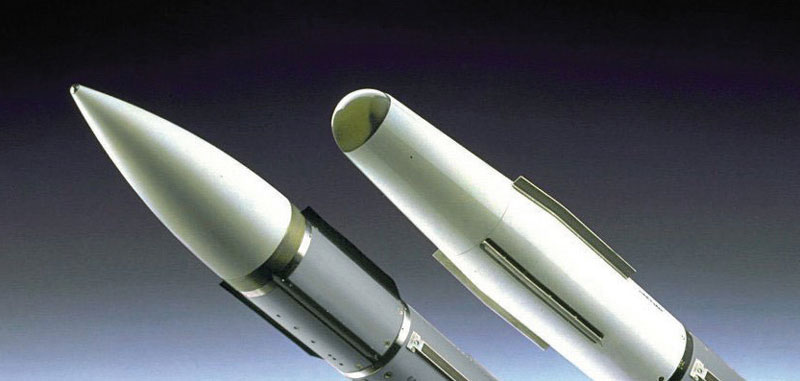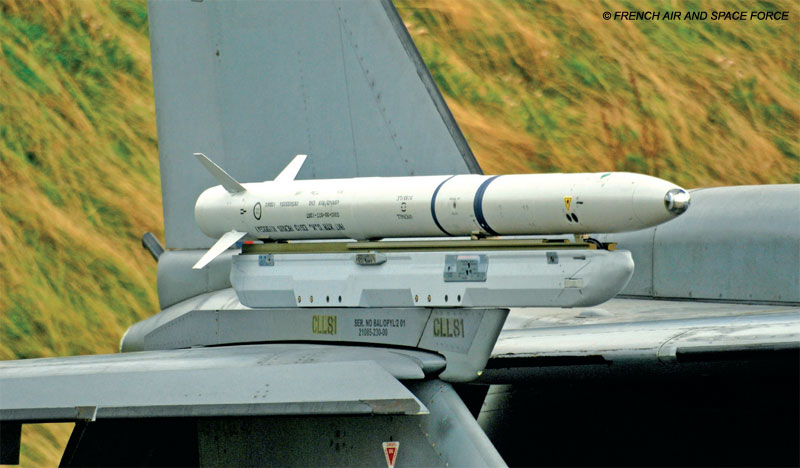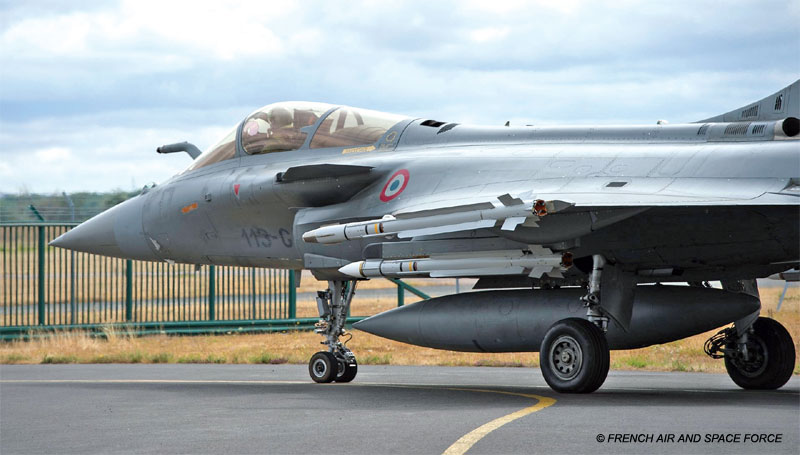Wide range of imported missile systems has given more teeth to India’s air power
Atul Chandra
The modern battlefield is characterised by high-technology and the one area that the Indian Air Force (IAF) has traditionally held an advantage over the Chinese People’s Liberation Army Air Force (PLAAF) is aerial weapons. The poor performance of Russian air-launched weaponry in the ongoing conflict with Ukraine will also be a source of worry for the PLAAF. In-fact, the conflict has proved a stunning vindication of western military equipment and training, even when provided to a numerically smaller force.

While the IAF is still largely equipped with Russian air-to-air missiles (AAM) in the R-27, R-73 and R-77 families, it also has western AAMs in the European firm MBDA’s Meteor Beyond Visual Range Air-to-Air Missiles (BVRAAM) for the Rafale, the MBDA’s Missile d’Interception et de Combat Aérien (MICA) for the Rafale and upgraded Mirage 2000 I/TI and Israeli firm Rafael’s Derby and Python AAMs for the Tejas. The IAF has also selected the MBDA’s ASRAAM as its Next Generation Close Combat Missile (NGCCM) with first use on upgraded Jaguar DARIN III strike fighters. However, the new MICA NG could attract the attention of the IAF.
The MICA is a close-range air-to-air missile for self-defence combat and interception beyond direct sight. It is the only missile in the IAF inventory to be equipped with two interchangeable seekers: one being radio frequency/electromagnetic (EM) for all-weather interception and the other infrared (IR) for covert or self-defence interception. The highly manoeuvrable MICA can also be fired at targets behind the aircraft via a target designation, which is transmitted by the Link 16 datalink from another aircraft. The IR version also acts as an additional infrared standby sensor, which notably enables the carrier aircraft to detect heat sources in flight. The MICA also has an internal multi-target capability. The MICA entered service in 1997 and was designed as a single missile replacement for short-range MAGIC II and medium-range Super 530 D missiles. While the Super 530 D was fitted on IAF Mirage 2000s, the MAGIC II missiles were carried onboard IAF Mirage 2000s and Jaguars. MICA missiles have been exported to over 14 countries worldwide.

Future Option
The MICA NG is intended as the replacement for the MICA missiles presently operational with the French armed forces. An extensive redesign of the current MICA family, the NG programme retains the same aerodynamics, mass and centre of gravity as on its predecessor. This has ensured that there will be minimal adaptation required to operate the new MICA with existing platforms and launchers. The MICA NG will be better suited to counter future threats, including targets with reduced infrared and electromagnetic signatures, atypical targets such as Unmanned Aerial Vehicles ((UAV) and small aircraft, as well as threats normally countered by air-to-air missiles such as combat aircraft and helicopters, which now feature increasingly sophisticated self-protection systems.
The MICA NG receives a new infrared seeker, which uses a matrix sensor providing greater sensitivity and the other variant’s radio frequency seeker will use an Active Electronically Scanned Antenna (AESA), enabling smart detection strategies. The reduced volume of electronic components within the MICA NG has allowed MBDA to add a larger quantity of propellant, which has significantly extended the range of the MICA NG. This combined with a new double-pulse rocket motor affords the missile with additional energy at the end of its flight, enhancing its manoeuvrability and ability to intercept targets at long range. Importantly, the MBDA also says that the addition of internal sensors allows monitoring of the weapon status throughout its life, including during storage and transport, which contributes significantly to reduced maintenance requirements and cost of ownership.
The first batch of 14 refurbished MICA air-to-air missiles was delivered by the MBDA to the French Directorate General of Armaments in June. The MICA NG programme has proceeded swiftly since the contract was awarded by the DGA to the MBDA in November 2018. The contract covered the acquisition of 567 new MICA NGs and pyrotechnic renovation of 300 MICA already in the inventory of the French armed forces. “The pyrotechnic renovation of these 300 MICAs already equipped within the Air and Space Force and the French Navy will allow their use until 2030 by all fighter planes (Rafale all standards, Mirage 2000-5, refurbished Mirage 2000D),” the DGA said in a statement. The older missiles are having their propellant replaced as its current propellant limits the missile’s lifespan. The pyrotechnic renovation will extend the life of the MICA by at least 10 years and under France’s Military Programming Law (LPM), 50 refurbished missiles are to be delivered in 2022. The following deliveries will be staggered until 2026. The MBDA is carrying out the missile refurbishment work at its Selles-Saint-Denis site with equipment produced by Thales LAS, Roxel and ASB, all located in France. The MBDA will start deliveries of the new-build MICA NGs from 2026.
MICA IR and EM missiles arm the Mirage 2000-5 and Rafale aircraft with the French Air and Space Force, as well as the Rafale aircraft of the French Navy. As part of the upgrades, the French Air and Space Force Mirage 2000Ds will also receive the ability to use MICA IR missiles. The new MICA NG missile will deliver superior mid-range interception, close combat and self-protection capability to the French Air and Space Force and the French Navy Rafales.

AIM-9X Block II
With India’s growing defence partnership with the US, it would not be out of the realm of possibility for the Air Intercept Missile AIM-9X Block II Sidewinder missile to attract interest from the Indian armed forces in the future. The AIM-9X programme is led by the US Navy in a joint effort with the US Air Force. Raytheon manufactures the missile at its facilities in Tucson, Arizona. The new generation short-range air-to-air missile uses passive Infrared IR energy for acquisition and tracking of enemy aircraft and provides a first shot, first kill opportunity against enemy aircraft employing IR countermeasures.
The AIM-9X Block II, introduced in 2011, added a datalink, fuse enhancements, and an Ignition Safety Device (ISD). Further software advances have increased its resistance to IR countermeasures and added a surface attack capability. The most recent hardware variant, the AIM-9X Block II+, began production in 2019 and has a reduced Radar Cross Section. The Block II variant is the most advanced version of the missile and was first introduced into service in 2011, following which the US Navy declared Initial Operational Capability (IOC) with it in 2015. The AIM-9X uses the same rocket motor and warhead as the AIM-9M but its major physical changes from previous versions of the missile include fixed forward canards and smaller fins designed to increase flight performance. It also features a redesigned guidance section and it now has an imaging infrared seeker. The AIM-9X offers enhanced post-launch agility due to the propulsion section now incorporating a jet-vane steering system.

The AIM-9X Block II Sidewinder is configured for easy installation on a wide range of modern aircraft, including the F-15C Eagle, F-15E Strike Eagle, F-16 Fighting Falcon, F/A-18 Super Hornet, E/A-18G Growler, F-22 Raptor and all F-35 Joint Strike Fighter variants. As part of National Advanced Surface-to-Air Missile System (NASAMS), the AIM-9X adds a short-range layer of defence. The US Navy will continue to acquire the AIM-9X Block II till 2035 and this means that export customers of these missiles will gain from continuous updates and economies of scale from the programme.

